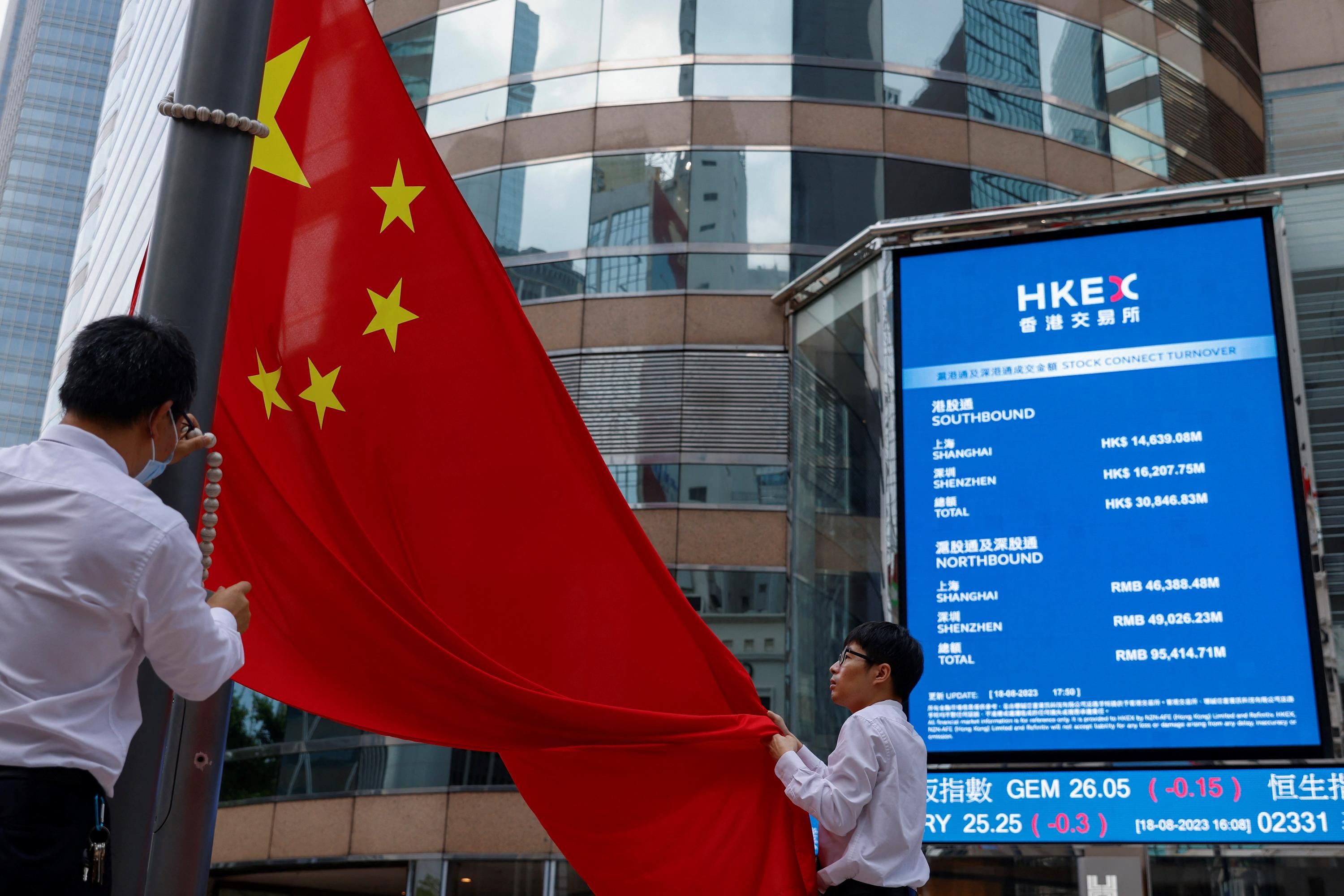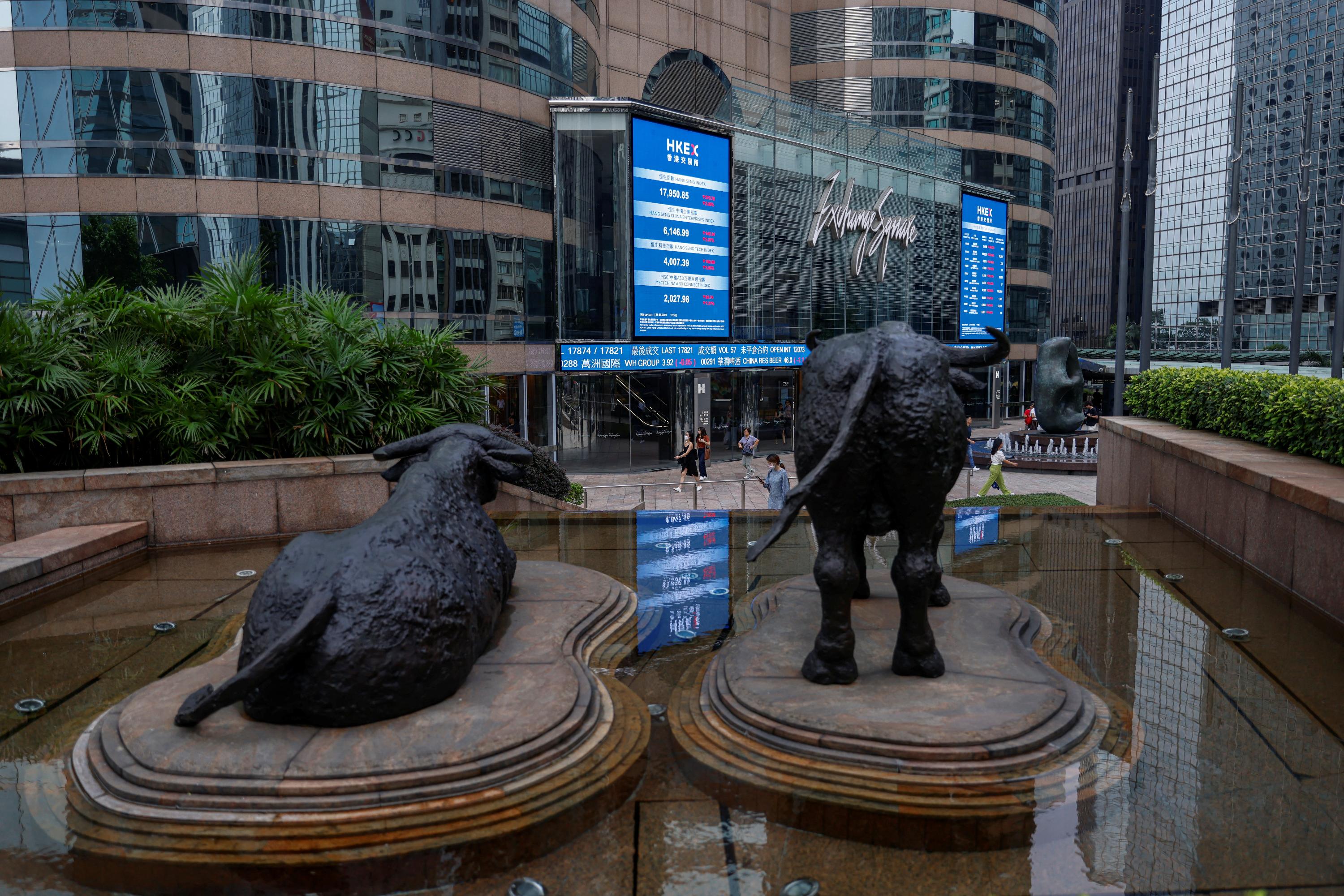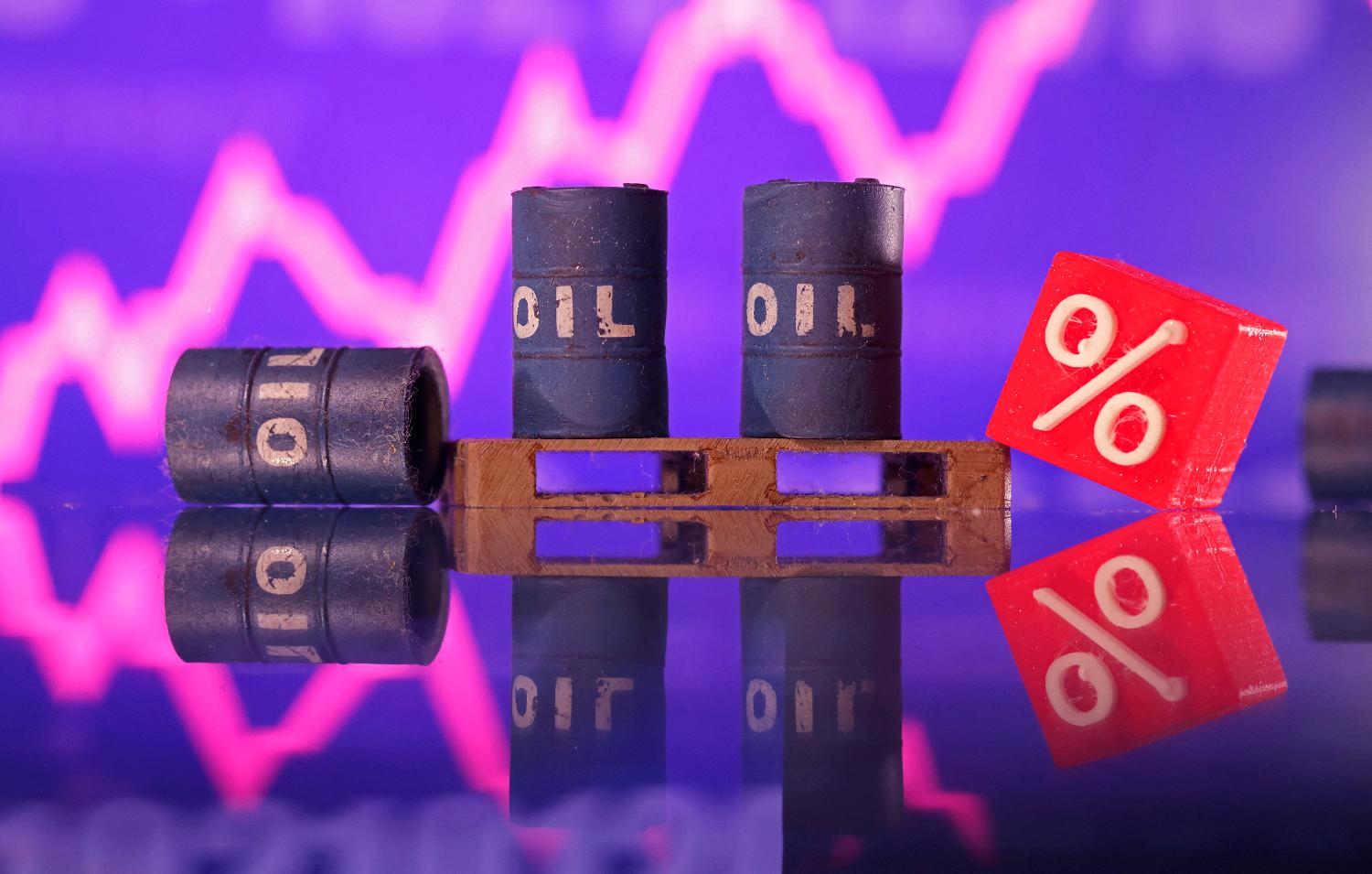
2024-09-25 06:09
LITTLETON, Colorado, Sept 25 (Reuters) - Southeast Asia is fast becoming a key growth market for natural gas, and on paper has an aggressive development pipeline for gas-fired power stations that if completed would ensure the region would be a major gas consumer for decades. Southeast Asia is also one of the fastest growing destinations for shipments of liquefied natural gas (LNG). Total LNG volumes to the region have more than doubled since 2019, outpacing all other key markets, according to Kpler. But gas bulls should be wary about how much of Southeast Asia's proposed gas power development pipeline remains stuck in the planned phase, as only around 6% of the region's announced power projects are currently under construction. The remainder are still only planned on paper, and so remain at risk of potential delay or cancellation if power sector or government priorities switch to alternate power sources. And the risk of deep cuts to gas-fired capacity plans is high, as clean energy capacity development has grown at three times the pace of gas-fired capacity since 2018, and has recently exceeded regional gas capacity for the first time. Steadily rising clean generation capacity is in turn forcing energy system planners to assess the generation requirements from remaining system components, placing potentially costly and long-duration development projects in jeopardy. BIG PLANS Close to 100,000 megawatts of gas-fired power generation is either already under construction or has been announced across Southeast Asia, according to Global Energy Monitor (GEM). That total is the third-highest for all regions behind Eastern Asia, which includes China, and Western Asia, which includes the Middle East, GEM data shows. Of that planned total, only around 12,600 MW is currently under construction, while nearly 87,000 MW is categorized as being in pre-development. The region has around 109,000 GW of gas-fired capacity in operation, which places Southeast Asia seventh out of 15 regions tracked by GEM in terms of operational gas capacity. But if all of Southeast Asia's pre-development gas plans come to fruition, the region would jump to fourth on the global gas power capacity table, and therefore emerge as a significant player in global gas markets. CAPACITY FLUX The scale and pace of any region's power sector capacity development is constantly in flux and determined by a slew of factors including the economics of each project, the extent of government aid for developers and the cost of debt financing. All of those factors can fluctuate over the course of a planned development project and mean that data trackers such as GEM frequently revise projections. Gas-fired capacity requirements are also determined by the power generation mix within each country, which is also changing at a faster pace than many large-scale energy developers can keep up with. For some developers of fossil-fuel fired plants, the speedier emergence of clean energy projects that can generate an equal or greater amount of low-emissions power could result in their proposed projects becoming surplus to requirements before they can even be built. CLEAN GROWTH For Southeast Asia's gas power plant developers, the rapid build-out of clean electricity generation capacity over the past five years is undermining the demand case for major rises to generation capacity from fossil fuels. Between 2018 and 2023, gas-fired generation capacity within the Association of Southeast Asian Nations (ASEAN) member countries increased by 16% to roughly 103 GW, according to energy think tank Ember. That expansion pushed regional gas capacity to a record, but faster capacity growth by other power sources led to a fall in natural gas' share of regional electricity capacity to a record low 31% in 2023, from 37% in 2018. Over the same period, clean energy generation capacity across ASEAN increased by 63% to 105 GW. That means regional clean capacity was already greater than regional gas capacity last year, and keeps growing as more solar and wind energy projects come online at a much faster clip than new gas-fired capacity. COUNTRY RISK The growth pace of clean generation capacity has been especially quick within Vietnam, which is also the country with the highest proportion of planned gas-fired capacity in Southeast Asia. Of all the announced gas-fired capacity plans in Southeast Asia, roughly half is slated to be built in Vietnam, GEM data shows. But Vietnam is also a leading clean energy capacity builder, which is altering the extent of the country's gas-fired needs. From 2018 to 2023, Vietnam's clean electricity generation capacity jumped by 146% to 46 GW. Over the same period, Vietnam's gas-fired capacity remained flat at 8.15 GW and resulted in gas capacity falling to only 10% of total electricity generation capacity in the country. That gas share compares to 18% in 2018 and 38% in 2010, and indicates that gas-fired power has already been steadily squeezed out of Vietnam's generation mix while renewables and hydropower have taken on greater systemic importance. Vietnam's power producers have also expanded coal-fired capacity to record highs in recent years in order to keep overall energy costs in check and boost electricity supplies. The roughly 27 GW of coal-fired capacity in place in Vietnam means that fossil fuels already account for a roughly 43% share of total generation capacity in the country. Any further expansions in fossil-fired capacity - even from cleaner-burning natural gas - would be at odds with the country's stated target of net zero power emissions by 2050. In addition, a recent price cap set by the government on power generated from LNG imports is also expected to slow investments in LNG import terminals in the country, which remain exposed to swings in international LNG prices regardless of domestic power price limits. That leaves the country's aspiring gas-fired power developers at risk of disappointment. Some outdated coal-fired plants can be replaced by gas plants, which would help some of the proposed projects cross the finish line. But at this stage the full completion of all planned gas-fired projects in Vietnam seems unlikely, and means that project developers may need to cut back on gas capacity construction estimates for the entire region. Sign up here. https://www.reuters.com/business/energy/southeast-asias-bright-gas-demand-outlook-may-disappoint-maguire-2024-09-25/

2024-09-25 06:03
LONDON, Sept 25 (Reuters) - Even as U.S. markets reasonably bask in "soft-landing" hopes - a fresh downturn in Europe's biggest economy raises more serious questions on the eastern side of the Atlantic. The weakness of German industry can hardly be a big surprise to anyone who has been paying attention. The past two years have featured Ukraine-related energy shocks, intensified Chinese competition in the auto sector, a fumbling attempt to break into electric vehicles and a painful borrowing squeeze. For ING economist Carsten Brzeski, following German macro data is "like a long stroll on the boulevard of broken dreams." But even by the standards of the past couple of years, the latest news is alarming. Although Germany's economy showed tentative signs of recovery earlier this year, the country's business surveys in September point to a relapse. This is largely due to stumbling China, Germany's largest trading partner and with whom it exchanged a quarter of a trillion euros worth of imports and exports last year. Germany's manufacturing sector appears to be in deep contraction yet again, according to both S&P Global's reading and the homespun Ifo survey. S&P Global's index combining both factory and service sectors suffered the deepest downturn in seven months in September. Ifo's manufacturing index cratered to its lowest point since the COVID-19 pandemic lockdowns in June 2020. Germany's top economic institutes are now set to downgrade their full-year 2024 forecast to show gross domestic product shrinking 0.1%, which would mark a second consecutive annual contraction. That sort of shallow recession might not yet be a "hard landing" per se - and Germany's euro zone peers are doing better. But it shakes faith in whatever might be defined as a "soft" touchdown. The European Central Bank is offering some help, with two interest rate cuts already in the books this year. But its moves have been in smaller clips than the jumbo cut unloaded by the Federal Reserve last week and there appears to be foot dragging in Frankfurt's "Eurotower" about the pace of further reductions. POLITICAL FOOTBALL Despite the business fug, you'd be hard-pressed to find much angst in headline German market metrics. Blue-chip German stocks (.GDAXI) , opens new tab hit record highs last week. And even though unhelpful for struggling German exporters, the euro is close to its best levels in two years against the dollar - with its real effective exchange rate index close to the highest in a decade. Where you're more likely to see "hard-landing" worries reflected is in the widening credit spreads - or risk premiums - on high-yield bonds. While so-called junk bonds benefit from interest rate cuts, the impact is modest in comparison to the hit they typically take from earnings weakness and recession-fueled default fears. But - just like their U.S. equivalents - euro "junk" bond spreads are close to the narrowest they've been since the Ukraine invasion and the ECB tightening of early 2022. The elephant in the room is the auto sector - estimated to account for about 7% of the European Union's GDP and even more in Germany. As BlackRock's credit team pointed out, that sector represents about 6% of the Bloomberg Pan-European Investment Grade debt index and almost 11% of the high-yield equivalent. And dour returns make it among the worst-performing sectors both this month and in the current quarter. JPMorgan's European credit team earlier this month said it has been underweight autos all year, citing "significant headwinds" from lower-cost Chinese rivals and energy problems. And it's been another rough month for Germany's "champions," with Volkswagen's (VOWG_p.DE) , opens new tab unprecedented plan to shut factories on its home turf and a BMW (BMWG.DE) , opens new tab profit warning that sent its share price plummeting. Both companies blamed a mix of Chinese competition and rising labour and energy costs in an industry that's clearly ailing more broadly. The STOXX 600 Autos and Parts share index (.SXAP) , opens new tab has underperformed the wider market by some 15% this year. As JPMorgan's team note: "The sector has become one of the main political footballs in the emerging global trade war." China's latest stimulus measures this week may shift the demand picture a bit, and German auto shares did get a lift on Tuesday. But with U.S. elections nearing and escalating tariff wars and protectionism now a constant threat, it seems unlikely that the drag on the German industrial world will dissipate anytime soon. It's tough to see how Germany stops sputtering - whether it can be just contained to autos is a bigger question. The opinions expressed here are those of the author, a columnist for Reuters. Sign up here. https://www.reuters.com/markets/europe/german-relapse-trolls-european-soft-landing-mike-dolan-2024-09-25/

2024-09-25 05:53
Dow, S&P 500 end lower as investors await insights on Fed rates China's yuan eases after rising sharply on Tuesday Oil falls on easing Libya supply concerns, China demand worries NEW YORK, Sept 25 (Reuters) - Global stock indexes mostly eased on Wednesday along with energy shares, while U.S. Treasury yields rose as investors stuck to the view that the Federal Reserve will be able to create a soft landing for the U.S. economy. China's yuan gave back earlier gains a day after China's central bank unveiled its biggest stimulus since the pandemic to pull the economy out of its deflationary funk and back towards the government's growth target. In the U.S., Wednesday's data showing new home sales falling in August had little impact on markets. Data on Tuesday showing U.S. consumer confidence dropped by the most in three years in September added to worries about the labor market. The U.S. central bank last week began an anticipated series of interest rate cuts with a large half-percentage-point reduction. Traders are now pricing in 59% odds of a 50-basis point cut at the Fed’s Nov. 7 meeting, up from 37% a week ago, and a 41% chance of a 25 basis point reduction, according to the CME Group’s FedWatch Tool. "We're seeing yields trend broadly higher, which is a little counter-intuitive at the start of the Fed cutting cycle," said Chip Hughey, managing director of fixed income at Truist Advisory Services in Richmond, Virginia. Investors will be watching this week for U.S. weekly jobless claims, due on Thursday, and the personal consumption expenditures price index, due on Friday. On Wall Street, the Dow and S&P 500 ended lower, while Nasdaq was flat. Energy (.SPNY) , opens new tab led declines among S&P 500 sectors, falling 1.9% on the day, with oil prices also ending lower. The Dow Jones Industrial Average (.DJI) , opens new tab fell 293.47 points, or 0.70%, to 41,914.75, the S&P 500 (.SPX) , opens new tab fell 10.67 points, or 0.19%, to 5,722.26 and the Nasdaq Composite (.IXIC) , opens new tab rose 7.68 points, or 0.04%, to 18,082.21. MSCI's gauge of stocks across the globe (.MIWD00000PUS) , opens new tab fell 0.95 points, or 0.11%, to 843.61. The STOXX 600 (.STOXX) , opens new tab index fell 0.11% The dollar bounced off a 14-month low against the euro in choppy trading. The euro was last down 0.41% at $1.1134 after earlier reaching $1.1214, the highest since July 2023. The dollar index rose 0.68% to 100.91. It earlier fell to 100.21, matching a low from Sept. 18, which was the weakest since July 2023. The greenback gained 1.03% to 144.68 Japanese yen and reached 144.75, the highest since Sept. 3. The dollar was last up 0.33% at 7.033 yuan in offshore trading. The Chinese currency earlier reached 6.9952, the strongest since May 2023. In Treasuries, U.S. 10-year yields last traded up 4.9 basis points at 3.784% . Since the Sept. 18 rate cut, 10-year yields have risen about 3 bps. Oil prices declined as supply disruptions concerns in Libya eased. U.S. crude fell $1.87 to settle at $69.69 a barrel and Brent fell to $73.46 per barrel, down $1.71 on the day. In other commodities, gold rose to a record high as expectations for another big rate cut by the Fed helped bullion's rally. Spot gold gained 0.2% to $2,662.00 per ounce by 1750 GMT after hitting an all-time high of $2,670.43 earlier. Sign up here. https://www.reuters.com/markets/global-markets-wrapup-1-2024-09-25/

2024-09-25 04:55
SINGAPORE, Sept 25 (Reuters) - Mining investment conferences have a great track record of pointing to the next growth area for commodities, as they bring together early stage investors and junior miners seeking to get projects off the ground. A decade ago lithium was the popular metal, five years ago it was the turn of gold and more recently copper has been the flavour of the month at these events across Asia. But at the 121 Mining and Energy Investment conference this week in Singapore there was no clear choice, and no real consensus on where the best opportunities lie. If there was a broad theme, it was that the energy transition is real and happening, even if it will take place at varying speeds and in different forms across Asia, the world's most populous region and the engine room of global economic growth. But how best to leverage the energy transition into profitable investments is turning into a vexing challenge for both those with cash to splash and those seeking to develop projects aimed at accelerating the change to cleaner fuels and power systems. One of the surprising metals on the radar screen at the conference was lithium. It went out of favour in recent years after a surge in investment took the market into surplus, resulting in a collapse of prices, which have dropped some 88% since reaching a record high in December 2022. The thinking is that while the lithium market is currently oversupplied, and this may persist into 2025, there is a wave of new demand coming. Much of the bearishness surrounding lithium has been about the slower-than-expected uptake of electric vehicles in the developed world. But while sales may have been disappointing, lithium demand is set for strong increases in the next few years as electric heavy vehicles enter service, and as battery storage to firm renewables such as wind and solar become more widespread. It's this demand for lithium that will end up trumping any weakness in EV car sales, and it's set to accelerate strongly by 2030, which is coincidently around the time a mining company may be able to bring on new production assuming they started development soon. STEEL DEMAND EQUALS COAL Another out of favour commodity is coal, but there was interest expressed in metallurgical, or coking coal, the higher quality fuel used mainly to make steel. In effect this is an India play, with the expectation that as it continues its massive infrastructure build out, the South Asian nation will also produce more steel, and thus need to import coking coal given the lack of domestic resources. While coal is the bogeyman of climate change, the view among some investors is that given the energy transition relies heavily on steel, coking coal can be acceptable given its role in producing steel. Steel can be de-carbonised by upgrading iron ore using green hydrogen and then using electric arc furnaces, but the view is that this will take several decades to reach the scale needed, and in the meantime the coal-intensive, traditional basic oxygen furnace method will dominate in India, as it does in China. Another part of the commodity complex attracting investor interest is the midstream sector, where raw materials are processed into intermediate goods. The desire of Western countries to diversify away from China's dominance of metal processing is unlocking opportunities, such as the capital available from the U.S. Inflation Reduction Act. The trick is navigating the bureaucratic processes behind the various global legislations, and even if the money can be accessed, it still may not be enough to overcome China's economies of scale and first mover advantages. For example, setting up a lithium processing plant in Australia, the world's biggest producer of the battery metal, is likely to come in at up to eight times the capital and operating cost of a similar operation in China. Accessing capital remains an ongoing struggle, with both investors and miners saying the pools of available capital are shrinking, especially if Chinese money is deemed politically unacceptable. This means that smaller projects are increasingly turning to intermediaries to obtain funding, such as global trading houses such as Glencore and Trafigura. Banks will lend to these well-established companies, and they in turn will lend to smaller-scale projects. But the problem with this process is that it increases the cost of capital and slows down the pace at which new projects can be brought on line. The bottom line is that the energy transition is viewed as offering huge opportunities to miners, traders and investors, but it remains plagued by uncertainty over which technologies will emerge as the leaders, and also the lack of coordinated government policies such as incentives and carbon taxes. The opinions expressed here are those of the author, a columnist for Reuters. Sign up here. https://www.reuters.com/markets/commodities/miners-investors-see-scope-energy-transition-struggle-with-choices-russell-2024-09-25/

2024-09-25 04:33
A look at the day ahead in European and global markets from Kevin Buckland Beijing's big shot of stimulus is still pumping through Chinese markets, but its effect on broader markets could already be fading. Mainland blue-chips chased Tuesday's 4.3% surge with gains up to 3.4% in today's session and Hong Kong's Hang Seng jumped as much as 3.1%, extending yesterday's 4.1% rally. China's strong start to Wednesday initially helped to buoy stock benchmarks in Australia and South Korea - whose economies are closely tied to China's fortunes - but those gains soon fizzled out. From the moment of the Chinese authorities' announcement on Tuesday of their biggest and broadest stimulus measures since the pandemic, analysts had looked through the euphoria to question whether anything would address core structural problems. The reaction on Wall Street overnight was modest with advances between 0.2% and 0.5%, and U.S. futures at the time of writing were pointing about the same amount lower. Concerns about a U.S. downturn following a big surprise weakening in consumer confidence, revealed in data on Tuesday, may have helped to temper any optimism about the global growth narrative. Europe has plenty of economic worries as well, and futures indicate a lower start for stocks in the region. Essentially, it all tells the same story: The global easing cycle is well and truly upon us (unless you're in Japan). The People's Bank of China followed Tuesday's volley of rate cuts with another reduction on Wednesday, and traders are leaning heavily towards a second super-sized Fed cut at the next meeting in November. Fed Governor Adriana Kugler speaks on the economic outlook later today, continuing a busy week of Fedspeak that includes Chair Jay Powell on Thursday. In Europe, today's schedule has the ECB's Elizabeth McCaul participating in a roundtable and the Bank of England's Megan Greene speaking on the topic of consumption. Sweden's Riksbank is widely expected to cut rates by 25 basis points later in the day, and economists say two more are likely in the remaining two meetings of 2024. Riksbank Governor Erik Thedeen himself agrees with that assessment and is not taking the possibility of a half-point cut off the table. Key developments that could influence markets on Wednesday: -Riksbank policy decision -ECB's McCaul, BoE's Greene speak -France consumer confidence, unemployment (both Sept) Sign up here. https://www.reuters.com/markets/europe/global-markets-view-europe-2024-09-25/

2024-09-25 04:32
Sept 25 (Reuters) - Oil prices fell more than 1% on Wednesday as investors reassessed whether China's latest stimulus plans will be able to boost its economy and spur fuel demand in the world's largest crude importer. Still, declining U.S. crude oil and fuel stockpiles, and more violence in the Middle East, provided some support for the market. Brent crude futures were down $1.10, or 1.46%, at $74.07 a barrel at 1200 GMT. U.S. West Texas Intermediate crude was down $1.14, or 1.59%, at $70.42 per barrel. Despite a slew of monetary support measures announced by China's central bank on Tuesday, the boldest since the pandemic, analysts warned that more fiscal help was needed to boost activity in the world's second-largest economy. "Concerns lingered that more fiscal support would be needed to boost confidence in the Chinese economy. This uncertainty raised doubts about sustained demand growth, weighing on crude prices," said George Khoury, global head of education and research at CFI Financial Group. Oil prices rose by about 1.7% on Tuesday after China announced sweeping interest rate cuts and more funding. But credit demand is already extremely weak, and the steps did not include any measures to shore up real economic activity. "Market participants (are) questioning if the latest stimulus measures by the People's Bank of China are enough to support Chinese economic and oil demand growth," said UBS analyst Giovanni Staunovo. "I still see further upside for crude prices, with oil inventories still falling globally," he added. U.S. oil stockpiles fell by 4.34 million barrels last week while gasoline inventories dropped by 3.44 million barrels and distillate stocks were down by 1.12 million barrels, according to market sources citing American Petroleum Institute figures on Tuesday. The intensifying conflict between Iran-backed Hezbollah in Lebanon and Israel also supported crude prices, with cross-border rockets launched by both sides increasing fears of a wider conflict. Although Iran's leadership has shown restraint, an attack is probably on the cards in order to save face, but without enraging its European allies and disrupting the main oil trade routes, said Achilleas Georgolopoulos, investment analyst at brokerage XM. Meanwhile, a hurricane threatening the U.S. Gulf Coast has changed course towards Florida and away from oil and gas-producing areas near Texas, Louisiana and Mississippi. Sign up here. https://www.reuters.com/markets/commodities/oil-prices-steady-china-stimulus-hopes-fade-us-crude-stockpiles-fall-2024-09-25/
